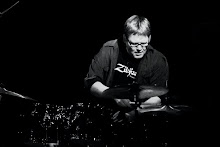One of the things I've noticed has live music work has (thankfully) opened up a bit is how much certain non-playing abilities have atrophied. These include:
-Finding cheap parking in close proximity to the gig
- Finding parking AT ALL!!!
-Figuring out a good route to the venue that doesn't take too long
-Selecting the best drums, cymbals, and sticks for the gig AND NOT FORGETTING ANYTHING *
-If you're the leader, picking sets, which tunes to play, avoiding consecutive keys, grooves, and tempos…
-Negotiating with management
-Paying everyone
The thing is, all these skills, just like musician ones, can get out of shape if we don't use them regularly.
Don't be too impatient with yourself if they have to ramp up again. We were doing this for a long time before it all stopped for 2 years.
* But if you do forget something (say, a snare drum) if you find yourself in the east end of Toronto, go see Nathan at the rental counter of the Scarborough Long and McQuade, he'll fix you up. :)
What a coincidence! Here's me playing with Kirk MacDonald at The Black Bear Pub on Tuesday July 19th, 2022. Oddly enough, I'm playing a rented Mapex Black Panther snare! Even more oddly, this is the last footage of me playing while still having an appendix, as it was removed 2 days after. Life is interesting, that's for sure…..



